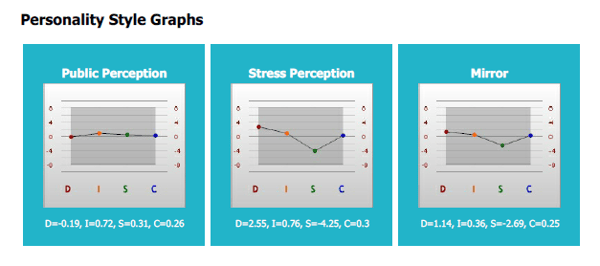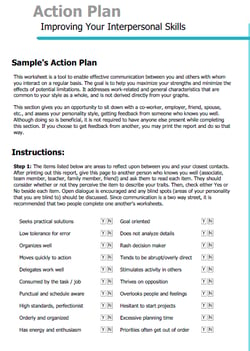- SHOP BY PRODUCT
- DISC TRAINING & CERTIFICATION TOOLS
- DISC RESOURCES
- BLOG
- SHOP BY PRODUCT
- DISC TRAINING & CERTIFICATION TOOLS
- DISC RESOURCES
- BLOG
- ALL ITEMS



One of the most valuable tools of the coach/consultant’s trade is the Behavioral Action Plan. It’s the part of coaching that gives you a window into the future and makes you a witness to the results of your joint efforts. If you want to affect more than self-awareness, read on to learn how to create a behavioral action plan with your client that will get results.
Behavioral coaches use behavioral action plans for a variety of specific reasons, depending upon the goal of the coaching and the coachee. But in all cases, the action plan is a tool to:
A behavioral action plan will require:
Regardless of your coachee’s goals, there are a few essential elements to include in your client’s action plan:
Behavioral “self” assessment is fundamental to your plan. You have to know where your client is so you can help them create a road map of where they want to go. Behavioral self-assessment is important because:

Using the behavioral assessment as a springboard for discussion, determine which behaviors are ones your client desires to improve. Those behaviors will become the benchmark: the ones that you will target.
Ask your client to write down a short description of the behavior based upon his/her current style, for example:
There are many intervention methods for coaching to improve behaviors for personal and professional growth.
Sometimes it’s a simple as writing down the goal and then discussing with your coachee the timeframes and ideas for specific ways to put their plan into action. One of the most important things to convey is that growth happens when one leaves their comfort zone and does something “less comfortable.” Being uncomfortable can be awkward, distressing, or sometimes downright painful, but this is where growth happens. A good rule of thumb is to advise your client to go out into uncharted or difficult areas, armed with new knowledge of self and with coach support.

Your client’s DISC behavioral report comes standard with an action plan. This is a great starting point for an intervention method. It plays two roles:
Just remember, coaching is not a one-and-done situation but requires ongoing commitment from both you and your client. Today’s Millennial-minded workplace requires managers to also be coaches, so it’s important that you provide your client or staff feedback on a regular basis to check their progress on their goals, the actions they are taking toward their goals, and the personal observations they are making along the way.
Once you have a track record of personal development with your client, you can transition to continuous improvement, which is to build upon those positive growth lessons and to sustain change and continue to build on achievements.
It’s interesting to note that many people are hired or promoted for their technical skills or job title but are fired or quit for behavioral reasons. The Behavioral Action Plan will help your client to see the effects of his/her behavior, both good and bad, and become 100% focused upon positive outcomes. Behavior-based coaching provides your client or staff the framework to understand and interpret behavioral traits and to develop soft-skills, as well as performance skills.

© PeopleKeys. All Rights Reserved
WORKING DAYS/HOURS
Mon - Fri / 8:30AM - 5:00PM EST
